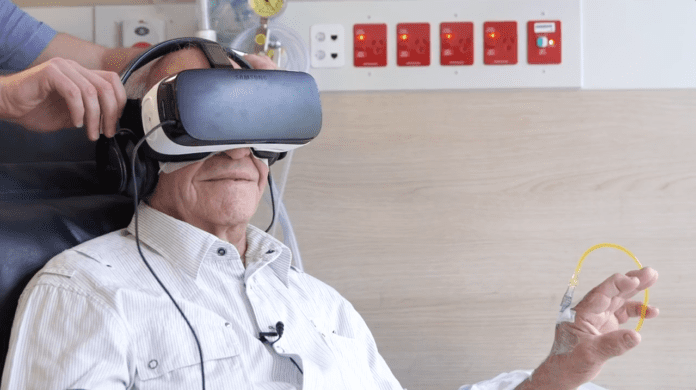Seth Olivia is an eight year old boy who is fighting cancer. His treatments, as you can imagine are intense, but there’s an element to his treatment that even Seth looks forward to. Seth has been allowed to engage in virtual reality simulations that make his hospital bed feel somewhat like Disney World.
Seth and countless other individuals who are bed-ridden or enduring extended stays in hospitals are gravitating to VR. Seth’s go-to virtual reality simulation brings him on an adventure through the human body. He views microscopic parts of the human anatomy up-close. The VR simulation is so engaging that it feels like diminutive components of the body such as white and red blood cells can be physically touched. These virtual simulations help Seth escape his depressing reality and enjoy a fantasy world where nothing goes wrong. Aside from taking virtual tours of the human body, Seth also uses virtual reality to travel through simulated versions of space, go virtual bowling and enjoy so many other immersive experiences.
A Much-Needed Escape
Seth suffers from T-cell lymphoma. This is a version of blood cancer that requires chemotherapy treatments upwards of three times per week. He receives treatment at Joe DiMaggio Childrens Hospital in Hollywood, Florida. DiMaggio is one of many hospitals making use of virtual reality technology along with video games and live-streaming to help patients escape their medical woes. Seth’s spirit is certainly elevated when engaging in VR games before, during and after chemotherapy treatments. Virtual reality gaming is especially helpful to youngsters like Seth who are nervous and fearful about enduring chemotherapy.
Several studies have shown that virtual experiences really do decrease nervousness and distract pediatric patients from pain when going through chemotherapy, surgery, radiation and stem-cell transplantation. A child-life manager at the Nicklaus Children’s Hospital, Renee Jadusingh-Sabillon, told the Miami Herald, “All of the sensory-specific things and advances in technology have really helped [patients]. They’re fully enthralled with what’s going on through the goggles. They can forget what’s happening around them.”
Young patients play everything from virtual soccer to a VR whack-a-mouse game that projects images directly onto the floor. Some patients are engaging in immersive healing experiences such as the live viewing of animals from local zoos. Others engage in interactions with astronauts through live-streams in a space dubbed the Infusionarium. Hospitals around the world are rapidly implementing these virtual reality technologies to make life that much easier for patients who have little, if anything, to look forward to.

The communications director for Zoo Miami, Ron Magill, states, “When you can inspire wonder and fascination that people have with animals, that is one of the best drugs you have. Making these kids and their moms smile, and helping them forget what they’re going through, at least for a little while, that’s the best reward you can have.”
VR’s Ever-expanding Role in the Context of Medicine and Therapy
Virtual reality will likely continue to grow in importance when it comes to patient treatment and therapy. The medical director of pediatric oncology at the Miami Cancer Institute, Dr. Doured Daghistani, is adamant that more hospitals should rely on VR as a helpful means of patient therapy, especially during chemo sessions that often take hours: “The Infusionarium is really something that is doing magic for these kids because they’re not just going to Dr. D to get chemo. They’re going to Dr. D to have some fun playing in the Infusionarium. When you go inside, you feel like you are in a special place – like you’re not in a doctor’s office or in a hospital. Virtual reality helps to distract you from a miserable situation and you feel better – absolutely.”











